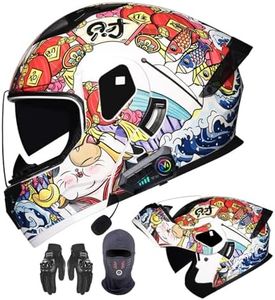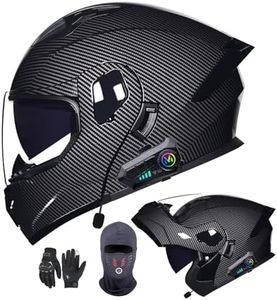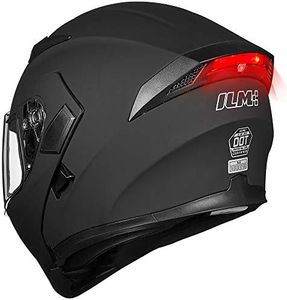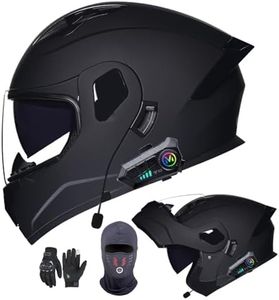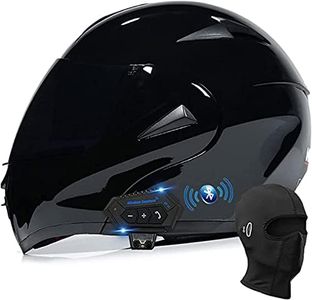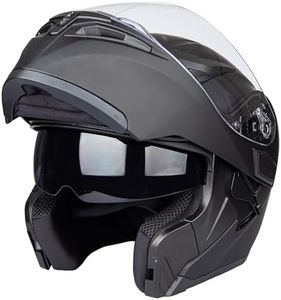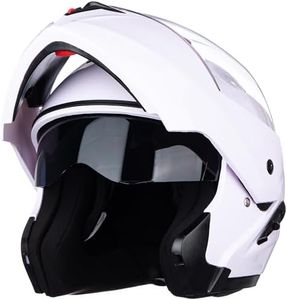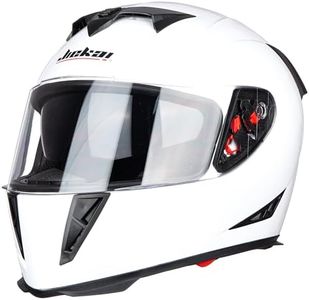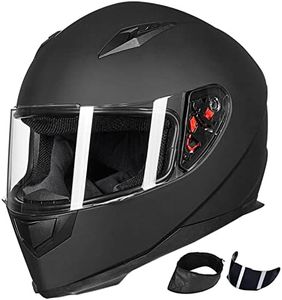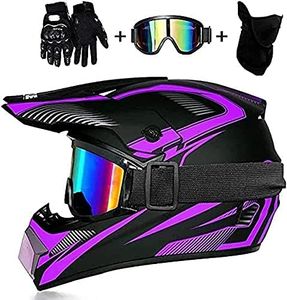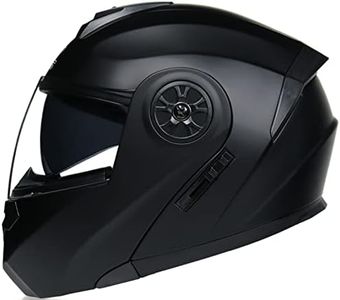We Use CookiesWe use cookies to enhance the security, performance,
functionality and for analytical and promotional activities. By continuing to browse this site you
are agreeing to our privacy policy
10 Best Full Face Motorcycle Helmets
From leading brands and best sellers available on the web.Buying Guide for the Best Full Face Motorcycle Helmets
Choosing the right full-face motorcycle helmet is essential for your safety, comfort, and riding experience. With so many options and features available, it's important to focus on what truly matters to you as a rider. Start by understanding how you'll use the helmet—whether it's for everyday commuting, long tours, or sporty riding—as this will guide your priorities among protection, comfort, and special features. Try on different helmets to check the fit and feel, and make sure the helmet meets recognized safety standards. Don’t be swayed only by style or brand; instead, learn what key specifications mean and how they fit your riding needs.Safety CertificationSafety certification refers to whether a helmet meets specific standards set by organizations like DOT, ECE, or SNELL. This is crucial because it ensures the helmet has passed impact, penetration, and retention tests, meaning it offers reliable protection in a crash. Certifications differ in strictness; for example, SNELL often has more demanding tests. If you ride internationally or participate in racing, higher or multiple certifications may be preferable, while basic commuting may only require DOT or ECE. Always check that your helmet has a visible sticker or label from a reputable standards agency to be sure it genuinely offers tested protection for your riding scenario.
Shell MaterialThe shell material is the outer layer of the helmet and plays a significant role in protecting your head by absorbing and spreading out impacts. Common materials include polycarbonate/plastic, fiberglass composite, and carbon fiber. Polycarbonate shells are lighter and more affordable, suitable for occasional or new riders, while fiberglass composites provide a balance of weight and strength, ideal for frequent riders seeking added durability. Carbon fiber shells are the lightest and strongest, best for demanding riders or those spending long hours wearing the helmet. Choose your shell material based on how much time you’ll spend riding and how important weight and durability are for you.
Fit and SizingFit and sizing determine how snugly and comfortably the helmet sits on your head, which directly affects your safety and comfort. Helmets come in various shapes (like round, oval, or intermediate) and sizes, usually measured by head circumference in centimeters. A helmet that is too loose could shift during an impact, reducing its effectiveness, while one that's too tight could cause pressure points and discomfort. To find the right fit, measure your head at its widest point and use the manufacturer’s size chart as a guide. Try on several helmets, wear them for a few minutes, and ensure there are no tight spots or wobbling. Choose a helmet that stays securely in place but doesn't cause pain.
VentilationVentilation refers to the system of intake and exhaust vents in a helmet that keep air flowing over your head. Good ventilation helps prevent overheating and fogging by letting fresh air in and expelling warm air out. Minimal vents may be fine in cooler climates or for short rides, while extensive, adjustable vents benefit those riding in hot weather or for longer durations. Think about your climate and how much you sweat—if you ride in warm or humid areas, prioritize helmets with multiple, easy-to-open vents for comfort.
Visor/Shield FeaturesThe visor or shield protects your eyes from wind, dust, and debris, and often includes options for sun protection and fog resistance. Features may include anti-fog coatings, UV protection, quick-release mechanisms, or an integrated sun visor. For day-to-day commuting or varying light conditions, a drop-down sun shield can be very convenient, while those riding mostly in daylight might focus on UV protection. If you wear glasses or often ride in the rain, look for helmets with anti-fog visors or compatibility with pinlock inserts to maintain clear vision.
WeightWeight refers to how heavy the helmet feels, which can have a big impact on comfort, especially during long rides. Lighter helmets reduce neck and shoulder fatigue, but ultra-light options may sometimes cost more or use premium materials. Everyday commuters or occasional riders might not notice a few extra grams, but long-distance riders should look for helmets that balance lightweight construction with strong protection, so they stay comfortable hour after hour.
Interior Padding and LiningThe interior padding and lining are the comfort layers inside the helmet that provide cushioning and help absorb sweat. Removable and washable liners are great for hygiene, especially if you ride frequently or sweat a lot. Some liners offer antimicrobial properties to reduce odors, and enhanced padding may give a more custom fit. Consider how often you'll clean your helmet and whether you want hypoallergenic materials based on your skin sensitivity and riding frequency.
Noise IsolationNoise isolation is how well the helmet reduces wind and road noise, contributing to overall riding comfort and reducing fatigue. Helmets with good seals around the neck and visor, snug padding, and fewer exterior protrusions typically offer better noise isolation. If you mostly ride in urban settings at lower speeds, noise isolation may not be a priority, but for highway rides or long-distance touring, a quieter helmet can make a big difference in reducing hearing fatigue and keeping you focused.

